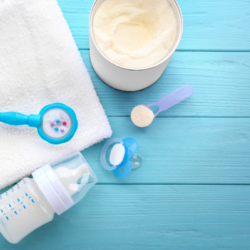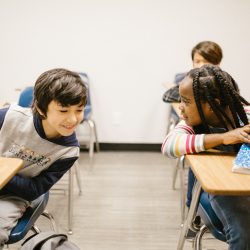In this article, we will limit our topic to the problems that arise before the period of adolescence . We will also eliminate infantile psychoses, neurological disorders (expression of organic encephalopathies), problems related to a general organic pathology, to limit ourselves to the circumstances most usually encountered in general medicine. On the diagnostic level, it will be necessary to identify sensory deficits (eye, ear) in order to oppose them to the appropriate therapy. Homeopathy is in fact very frequently requested to help children with their behavioral disorders at school .
States of psychomotor arousal in behavioral disorders
Usually accompanied by restlessness and irritability , the child does not keep still, he is hyperaesthetic, very often impulsive, has poor control and therefore has difficulty fixing his attention.
Psychomotor arousal drugs:
Irritable and resentful child who does not like to be spoken to. Anxious and agitated, he is psychically hypersensitive, rather capricious and particularly sensitive to pain.
The child is irritable, hasty and inattentive: in particular, he has little memory. He shakes his legs and feet, he doesn’t finish what he begins. Its behavior is generally improved at the seaside.
-
Lachesis :
Excited child, who talks a lot , easily goes from rooster to donkey. Sometimes depressed, very often jealous , he is hyperesthetic anyway .
This is a sensitive, irritable child who rarely lets his anger out.
-
Moschus :
Agitation with paradoxical symptoms; these children are ultimately very anxious hypochondriacs .
Children who are hyperexcitable, angry and also hypersensitive to pain, who often have repeated suppurations .
-
Luesinum :
Skinny, wrinkled, nervous and unstable children . Their nervousness also prevents any concentration. They are improved in the mountains .
Excitable children with great variability in mood, whose ideas rush to consciousness . Not only are they very agitated, but they are distressed. Tendency to insomnia from hyperideation .
The child does not stay still and in particular has constant shaking of the hands . He is subject to frequent night terrors . His behavior is improved by being busy.
-
Cina :
Susceptible, grumpy , irritable, the child has difficulty controlling his impulses. Frequent insomnia; very often tendency to verminosis .
Great plasticity of mood, very impressionable. Violent, agitated, angry, he cannot keep still and in fact presents a constant agitation of the hands and feet .
The child is irritable, angry, demanding , against a background of fatigue , indifference, sometimes depression . At the same time, there are symptoms of a sycotic reaction mode.
The predominant behavioral disturbances of attention
Associated in general with a weakness of memory, behind this disorder, it is necessary to look for :
- Abnormal anxiety
- Physical and mental asthenia
- Depressive behavior
Medicines for attention and memory disorders:
Intellectual delay, slowness in learning , shyness, intellectual fatigue.
Anxiety due to hypersensitivity , memory defect due to physical and intellectual fatigue . Slender morphology.
Quickly discouraged child with a tendency to isolation and indifference . Frequent headaches in thin subjects who nevertheless have a satisfactory appetite. Strong thirst, often with a desire for salt .
-
Silicea :
Anxious children who have difficulty fixing their attention. Tired and quickly discouraged , they are nevertheless nervous and irritable , rather hypersensitive and restless . They sometimes present fixed ideas.
These children are hypotrophic, prone to repeated infectious or suppurative pathologies ; although chilly, they sweat easily, especially on the feet.
-
Zincum :
Little energetic child, generally worried, he moves his feet and cannot be quiet. Very low memory .
-
Agaricus :
Intellectually slow children who often have tics .
The child shows excessive fatigue after the slightest intellectual work ; he has very little memory, he is different or irritable and susceptible. Her symptoms improve with eating .
An affective and relational problem
- The place in the siblings, rivalry or jealousy between siblings can indeed play a role
- The disagreement, the divorce of the parents will influence the behavior of the child. Their more or less neurotic character, their anxiety (as well as that of the educators) will have an indirect impact on the child’s schooling.
- Consideration will also be given to possible disagreement between parents and teachers.
Medicines for anxiety and emotional problems:
At the same time agitated and anxious, very often tired , the child “ arsenicum album ” often presents a concomitant pathology evolving according to the psoric reaction mode.
Quickly tired , the child is restless and restless, irritable, anxious, fearful of the future. Hypersensitive to everything , he is most often, but not necessarily, of slender morphology.
Anxiety, sadness, irritability. Concerned about unimportant details , very inclined to be afraid of everything. For this drug, as for the previous one, the morphology is therefore contingent.
Quickly tired, which makes him irritable as well as angry. Restless, rushed, he struggles to control his impulses. Subject rather of phobic structure .
The child is here shy, trembling, prone to stage fright , abnormally emotional with moreover a significant somatic repercussion : abdominal pain, diarrhea, polyuria …
-
Ignatia :
Anxious, hypersensitive children with a tendency to spasm (lump in the throat, abdominal pain). The symptoms are indeed paradoxical and contradictory .
Anxiety mainly made up of shyness and emotionality . The child is sometimes irritable, susceptible, whiny, but on the whole quickly consoled.
Nervous hypersensitivity, irritability, anger. The child finds it difficult to bear the contradiction . In addition, insomnia is sometimes felt around 3 or 4 in the morning.
Child often in a bad mood when waking up, who lacks self-confidence but who has the desire to succeed. Concomitance of anorexia and digestive disorders .
The role of physical or mental fatigue in behavioral disorders
Very often put forward by families or by teachers to explain a school difficulty: this fatigability can have a constitutional origin , it can also be fatigue due to emotional overwork with underlying anxiety. Sometimes it can be a depressive equivalent, especially with its lack of motivation . It will also be necessary to take into account a real extra-curricular overwork: TV, tiring weekends, multiple occupations, etc.
Finally, these four main demands partly go beyond what is usually referred to by the term “child’s character disorders” (aggressiveness, compensation in aggressiveness, sometimes inhibition, indifference and blocking towards the external environment. , infantilism and refusal to grow up).
The determination of each homeopathic medicine will be based on the particular signs of school behavior, the general signs and modalities of the patient, as well as the concomitant pathological signs.
Fatigability drugs:
Weak, tired children; their school problems are in particular often the consequence of their absenteeism due to recurrent nasopharyngeal or bronchial ailments .
-
Sepia :
Psychic fatigue with indifference , weakness, weakness of memory, tendency to irritability. These children are therefore prone to psorosycotic affections and show a characteristic morphology and behavior.
-
Psorinum :
Fatigue, anxiety , fear of the future, impression of inferiority in children who also have pathological symptoms of the psoric reaction mode.
Anxiety and worry with a tendency to depress ; lack of motivation, sadness, hyperirritability.
Great fatigue, especially reaction to family shocks ; indifference, loss of memory, frequent concomitant headaches.
Fatigue and nervous exhaustion. Hypersensitivity, irritability, emotionality. Also frequent headaches. Tendency to insomnia.
Dosage : Prescribe in high dilutions (15 or 30CH, 5 granules every day first then, with improvement, space out the catches until a weekly dose. However Tuberculinum will only be taken, at the same dilutions, at a reasonable rate. one-dose tube once or twice a month.





